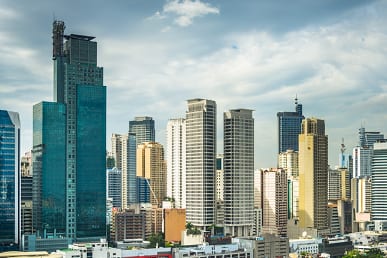Video Merits Hearings
By: Attorneys Robert L. Reeves and Marc R. Generazio
Over the last several years immigration courts within the Executive Office of Immigration Review (EOIR) have implemented Video Teleconferencing Hearings in a few jurisdictions nationwide. Video Teleconferencing (VTC) allows the immigration judge and trial attorney for the Department of Homeland security to conduct non-citizen removal hearing through the use of video equipment. VTC has been tested in hearings where the non-citizen is in custody of the USCIS and based on those evaluations, the EOIR desires to initiate a full scale VTC nationwide and would consist of all stages of the removal hearings including the merits hearing.
Based on evaluations, EOIR has noted several benefits from this program that has led to their decision to conduct unrestrained VTC hearings on a national scale. These benefits are 1) more efficient case processing; 2.) Security enhancements; 3) reduction in health concerns; and 4.) Cost effectiveness.
Case efficient processing was measured by the immigration judges not having to be confronted with the challenge of fighting heavy traffic to get to the courtroom at the detention facility and would eliminate the cost of travel expenses and save time and most importantly gasoline.
Security enhancement the EOIR states is an ongoing concern and the absence of all court personnel and the judge renders them safer. The health related concerns the EOIR consider an important one. In the absence of the judge and court personnel they run a lower risk on contracting Tuberculosis and Hepatitis B from non-citizens. The EOIR notes that the cost effectiveness will result from not incurring additional expense of having and operating a courtroom at the detention facility and would allow the facility to utilize that room for family visitation
Now that the EOIR has figured a way to save on travel expenses and avoid potential violence and spreading of infectious diseases, have they even considered the non citizen’s due process rights that will be blatantly disregarded in the process?
Here are some of the potential problems arising from TVC that the EOIR neglected to consider.
1. An accurate assessment of credibility frequently turns on the direct observation of the respondent and witnesses, especially if credibility is at issue. The delivery of testimony through video may be difficult, particularly if there are substantial technological problems whereby the judge or interpreter can’t hear or understand the respondent and the respondent may be confused as to who is asking the questions if the camera is focused on the immigration judge and not the interpreter.
2. Accurate translations are a challenge even for live hearing much less VTC. The camera in a VTC hearing will be focused on the person asking questions and not the interpreter thereby eliminating any communication from interpreter and respondent that may facilitate the communication such as hand signs or body language.
3. Attorney/client communications are essential during the removal hearings. Where the attorney and client are not in the same room would eliminate any communications afforded to the respondent. If the respondent has any objections to the evidence being submitted or misinformation, they will not be able to communicate with their lawyer in private. Nor will the attorney be able to speak with his/her client to explain what is going on or ask any questions. The EOIR addressed this problem in their assessment and stated that they would call a recess and have everyone clear the rooms on both sides to allow the client and attorney speak. Albeit a solution, this would create huge delays and be extremely burdensome each time the attorney wanted to communicate with his client.
4. Physical evidence. The respondent may not be able to examine any physical evidence that the trial attorney may present in court during the hearings.
5. Direct examination and cross examination of witnesses. If the attorney is present for the merits hearing and with his/her client and outside the presence of the immigration judge and trial attorney he/she will not be afforded an accurate opportunity to cross-examine any witnesses the government may call. The demeanor of the witnesses will be difficult to read via video
The Immigration and Nationality Act (INA) authorizes the use of video hearing in removal proceedings, but is silent on whether there needs to be consent by the non citizen before conduction of a merits hearing. If one finds him/herself in removal proceedings before an immigration judge and faced with a VTC hearing, they should consult with an experience immigration attorney to make all the necessary legal objections to preserve a record for appeal.





